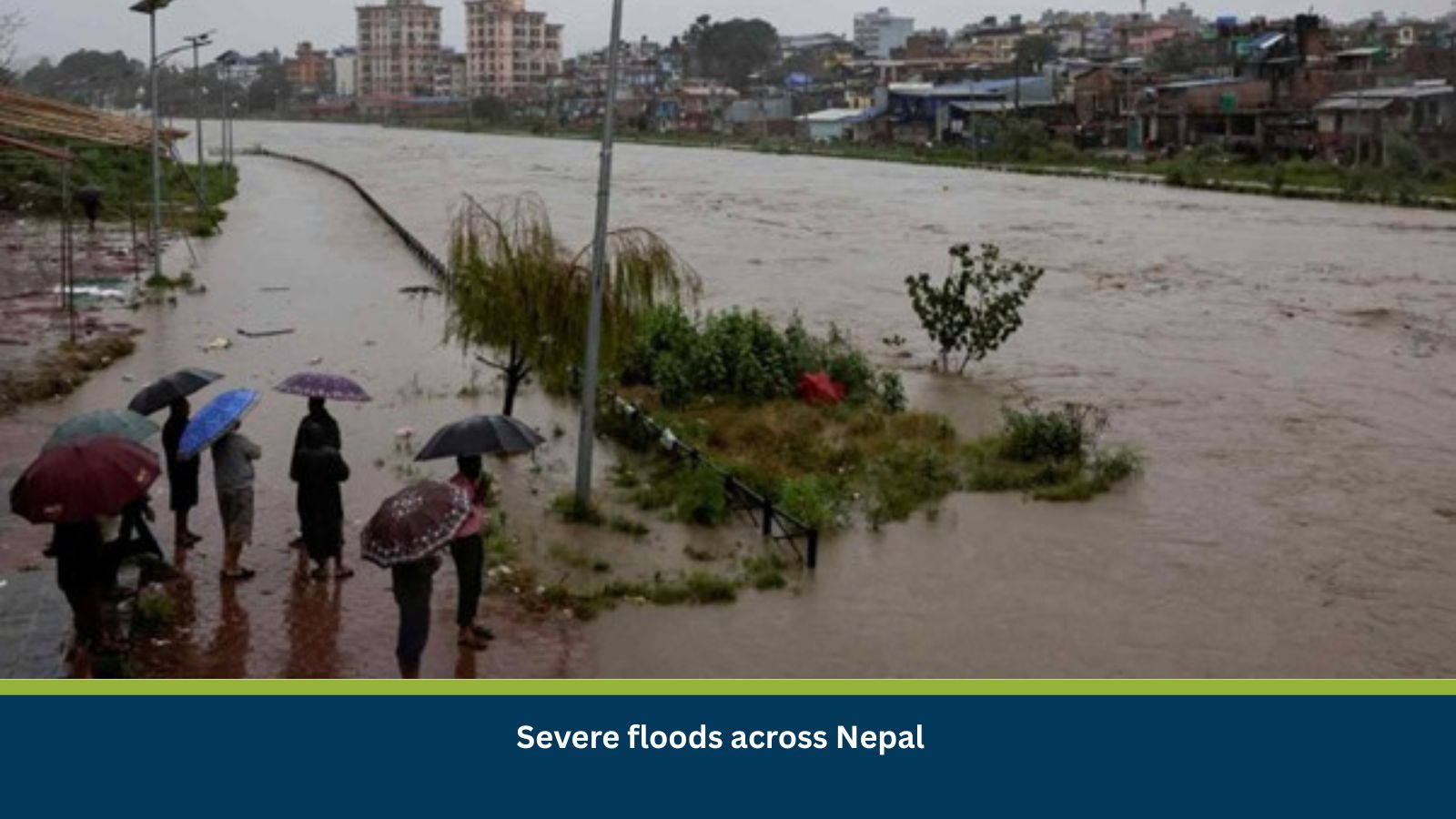What is Risk Analysis in the Context of Natural Disasters
Natural disaster risk analysis evaluates how extreme weather events such as floods, landslides, and heavy rainfall affect people, infrastructure, and business continuity. In Nepal’s monsoon season, such analysis is crucial given the country’s mountainous terrain, fragile road network, and dependence on hydropower. Each year, intense monsoon rainfall causes severe flooding, loss of life, and widespread damage—events that have become increasingly recurrent due to climatic volatility.
Executive Summary
- Date of Incident: 06 October 2025
- Location: Nepal
- Risk Category: Natural Disasters
- Severity Score: 4/5
- Confidence Level: 90%
Nepal is currently experiencing one of its most severe flood crises in recent years, with at least 63 fatalities reported as of October 6. Continuous heavy rainfall has forced the closure of the BP Highway to night traffic until October 7 and triggered widespread infrastructural damage across multiple provinces. Authorities have extended weather alerts until 20 October, warning of persistent rainfall and potential secondary landslides.
The high severity stems from the immediate human toll, prolonged infrastructure damage, and cascading impacts on logistics and utilities. Based on recurring monsoon trends and official warnings, the event’s effects are expected to extend well into mid-October, with full recovery likely requiring months.
Current Updates
Ongoing monsoon rainfall has caused flash floods and landslides across multiple provinces, destroying homes, washing away sections of roads, and inundating agricultural areas. The BP Highway, a critical route linking Kathmandu with the Terai, remains closed to night traffic. The Department of Hydrology and Meteorology (DHM) continues to issue alerts, citing sustained heavy rainfall across Bagmati, Gandaki, and Koshi provinces. Rescue operations are ongoing, but accessibility remains a major challenge in remote hilly areas.
Known Hotspots and Sensitive Areas
Flood impact is particularly severe in:
- Kathmandu Valley: Major rescue operations underway, with several areas submerged.
- Trishuli River Basin: Multiple past incidents of river swelling and landslides.
- Rasuwa and Simaltal Regions: High-risk zones due to frequent landslides and structural collapses.
- Trade Routes: Nepal–China border routes and internal highways remain vulnerable to washouts.
Impact on Transportation and Services
- The BP Highway and several feeder roads are disrupted, halting intercity and trade-related movement.
- Domestic flights, particularly in central Nepal, are being cancelled intermittently.
- Landslides continue to block secondary highways, isolating towns and rural districts.
- Power outages are affecting both residential and commercial zones, with reports of damage to 13 hydropower projects.
- Water supply, communications, and emergency services are under significant stress.
Recommended Actions
- Employee Safety: Conduct mandatory check-ins; implement remote work or safe lodging for on-site staff.
- Continuity Planning: Activate backup facilities and review supply chain dependencies. Prioritize alternate inventory routes through unaffected regions.
- Asset Protection: Secure and elevate valuable assets; test power backups and flood defenses at key sites.
- Communication: Establish dedicated internal/external communication channels for real-time updates and service advisories.
- Incident Response: Deploy cross-functional crisis teams (HR, Ops, IT, Security) for coordinated action and compliance with local emergency protocols.
Multidimensional Impact
The floods have far-reaching implications beyond immediate destruction. Energy production is severely affected as multiple hydropower plants are offline, causing power shortages in critical zones. Agriculture faces heavy crop and livestock losses, further stressing rural livelihoods and food supply chains. The transport sector suffers long-term damage to national highways and bridges, disrupting trade and tourism. On a social level, widespread displacement and resource scarcity may strain communities and complicate post-flood recovery. Environmental degradation, soil erosion, and river course alterations will have lasting effects on Nepal’s ecology and infrastructure stability.
Emergency Contacts
- Police: 100
- Fire: 101
- Ambulance: 102
- National Emergency: N/A
- Official Channels:
Final Thoughts
The current floods in Nepal underscore the country’s chronic vulnerability to monsoon-induced disasters. With fatalities already surpassing 60 and infrastructure losses mounting, the event represents not only an acute humanitarian emergency but also a systemic test of Nepal’s disaster resilience. The combination of prolonged rainfall forecasts, road and power disruptions, and widespread displacement suggests a medium- to long-term recovery horizon.
Businesses must prioritize employee safety, operational flexibility, and transparent communication with stakeholders. Policymakers and aid agencies should focus on strengthening early-warning systems, hydrological monitoring, and community preparedness to reduce future risk exposure. The coming weeks will be critical for stabilizing affected areas, restoring connectivity, and safeguarding essential services. Stay ahead of operational risks with real-time alerts, scenario modeling, and expert advisories with datasurfr’s Predict. Start your 14-day free trial of Datasurfr’s Risk Intelligence Platform today.






